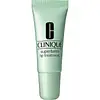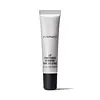What's inside
What's inside
 Key Ingredients
Key Ingredients

 Benefits
Benefits

 Concerns
Concerns

 Ingredients Side-by-side
Ingredients Side-by-side

Petrolatum
EmollientPolybutene
Polydecene
Skin ConditioningBis-Diglyceryl Polyacyladipate-2
EmollientOctyldodecanol
EmollientMicrocrystalline Wax
Emulsion StabilisingTocopheryl Acetate
AntioxidantPolyglyceryl-2 Triisostearate
EmulsifyingAloe Barbadensis Leaf Extract
EmollientCholesterol
EmollientHordeum Vulgare Extract
EmollientTriticum Vulgare Germ Extract
Skin ConditioningSqualane
EmollientLinoleic Acid
CleansingRetinyl Palmitate
Skin ConditioningSalvia Sclarea Extract
AntiseborrhoeicGlycine Soja Oil
EmollientTetrahexyldecyl Ascorbate
AntioxidantStearyl Glycyrrhetinate
Skin ConditioningBetula Alba Bud Extract
Skin ConditioningHexylene Glycol
EmulsifyingPotassium Sulfate
Caprylyl Glycol
EmollientPhenoxyethanol
PreservativeCI 15850
Cosmetic ColorantCI 19140
Cosmetic ColorantPetrolatum, Polybutene, Polydecene, Bis-Diglyceryl Polyacyladipate-2, Octyldodecanol, Microcrystalline Wax, Tocopheryl Acetate, Polyglyceryl-2 Triisostearate, Aloe Barbadensis Leaf Extract, Cholesterol, Hordeum Vulgare Extract, Triticum Vulgare Germ Extract, Squalane, Linoleic Acid, Retinyl Palmitate, Salvia Sclarea Extract, Glycine Soja Oil, Tetrahexyldecyl Ascorbate, Stearyl Glycyrrhetinate, Betula Alba Bud Extract, Hexylene Glycol, Potassium Sulfate, Caprylyl Glycol, Phenoxyethanol, CI 15850, CI 19140
Petrolatum
EmollientPolybutene
Hydrogenated Polyisobutene
EmollientTocopherol
AntioxidantRetinyl Palmitate
Skin ConditioningAscorbyl Palmitate
AntioxidantCholesterol
EmollientButyrospermum Parkii Butter
Skin ConditioningPrunus Amygdalus Dulcis Oil
Skin ConditioningTriticum Vulgare Germ Oil
EmollientPersea Gratissima Oil Unsaponifiables
Skin ConditioningRicinus Communis Seed Oil
MaskingSqualane
EmollientSilica
AbrasiveVanillin
MaskingEthylhexyl Methoxycinnamate
UV AbsorberStearyl Glycyrrhetinate
Skin ConditioningParfum
MaskingIron Oxides
CI 47005
Cosmetic ColorantPetrolatum, Polybutene, Hydrogenated Polyisobutene, Tocopherol, Retinyl Palmitate, Ascorbyl Palmitate, Cholesterol, Butyrospermum Parkii Butter, Prunus Amygdalus Dulcis Oil, Triticum Vulgare Germ Oil, Persea Gratissima Oil Unsaponifiables, Ricinus Communis Seed Oil, Squalane, Silica, Vanillin, Ethylhexyl Methoxycinnamate, Stearyl Glycyrrhetinate, Parfum, Iron Oxides, CI 47005
Alternatives
Ingredients Explained
These ingredients are found in both products.
Ingredients higher up in an ingredient list are typically present in a larger amount.
Cholesterol is a class of organic molecules called lipids. It helps hydrate your skin and is essential to having a healthy skin barrier.
Our skin naturally contains cholesterol in the outermost layer. Besides cholesterol, it also contains ceramides and fatty acids. Cholesterol makes up about 1/4 of your skin's outer layer and barrier. Your skin barrier is responsible for keeping allergens and microbes out. Having a healthy skin barrier is also responsible for keeping your skin firm and plump.
Our bodies use cholestrol to create vitamin D, steroid hormones, and more.
Learn more about CholesterolPetrolatum is more commonly known as petroleum jelly. It is created by mixing waxes and mineral oils.
This ingredient is effective at reducing water loss by 99%. This is because it is an occlusive. Occlusives create a hydrophobic barrier on the skin to prevent evaporation. This property makes it great for hydrating dry skin.
Pro tip: Use occlusives, such as this ingredient, on damp skin for the best results.
The quality or origin of petrolatum is only known when disclosed by the brand. Most cosmetic petrolatum has gone through several purification stages.
Another benefit of occlusives is it protects your skin against infection or allergies.
Petrolatum may not be safe for fungal-acne. Studies show mineral oil / petroleum leads to the growth of M. Furfur, a type of yeast.
Learn more about PetrolatumPolybutene is used to help control the viscosity of a product. This just means it helps adjusts the texture.
It is a polymer and does not get absorbed into the skin due to its large size.
Studies found this ingredient did not irritate skin in concentrations below 15%.
Learn more about PolybuteneRetinyl palmitate is a form of retinoid. Retinoids are the superstar class of anti-aging ingredients that include tretinoin and retinol.
This particular ingredient has had a bumpy year with its rise and fall in popularity.
First, Retinyl palmitate is created from palmitic acid and retinol. It is a retinol ester and considered one of the weaker forms of retinoid.
This is because all retinoids have to be converted to Tretinoin, AKA retinoic acid. Retinyl Palmitate is pretty far down the line and has to go through multiple conversions before its effects are seen.
Due to this long and ineffective conversion line, the benefits of Retinyl Palmitate are debated.
Studies show Retinyl Palmitate to help:
Dermatologists say this ingredient is ineffective because it isn't used in high enough concentrations in cosmetics.
This ingredient used to be found in sunscreens to boost the efficacy of sunscreen filters.
The downfall of Retinyl Palmitate was due to released reports about the ingredient being correlated to sun damage and skin tumors.
While there is a study showing this ingredient to cause DNA damage when exposed to UV-A, there is no concrete proof of it being linked to skin cancer. It is safe to use when used correctly.
All retinoids increase your skin's sensitivity to the sun in the first few months of usage. Be especially careful with reapplying sunscreen when using any form of retinoid.
Currently, this ingredient is still allowed in cosmetics all over the world. In Canada, cosmetics must have a warning label stating the product to contain Retinyl Palmitate
Fun fact: This ingredient is often added to low-fat milk to increase the levels of Vitamin A.
Learn more about Retinyl PalmitateSqualane is an emollient that helps the skin hold onto moisture. It's an oily liquid that occurs naturally in certain types of fish and plant oils.
Because squalane boosts hydration in the skin, it also comes with plenty of benefits: it is an antioxidant and can help fight free radicals and skin damage. Squalane is also found to have a detoxifying effect when applied.
Squalane comes from squalene, which occurs naturally within the sebum of our skin. It is one of the oils our skin produces to keep itself hydrated. Squalane is the hydrogenated version of squalene and has a longer shelf life.
Research shows that squalane is non-irritating (even at 100% concentration).
In general, it's a fantastic ingredient. It does a great job at hydrating the skin, and it's suitable for those with sensitive skin.
The source of squalane may impact malassezia / fungal acne. This is because olive oil derived squalane can contain impurities such as fatty acids and plant waxes. Sugarcane derived squalane is recommended for anyone with malassezia concerns.
Is squalane vegan?
This depends on the source. Squalane can be derived from both plants and animals. Most squalane used in skincare comes from plants.
Please note: the source of squalane is only known if disclosed by the brand. We recommend reaching out to the brand if you have any questions about their squalane.
Read more about squalene with an "e".
Is squalane an oil?
Squalane is often called an oil, but it’s technically not; it’s a hydrocarbon, meaning it’s only made of carbon and hydrogen, unlike true oils which are triglycerides made of fatty acids and glycerol.
The term “oil-free” isn’t regulated, so companies can define it however they want. Some exclude all oils, while others just avoid mineral oil or comedogenic oils.
While some people avoid oils thinking they cause breakouts, the right kind of oil (or oil-like ingredient like squalane) can actually help balance and hydrate your skin. It’s worth testing out simple oils or squalane to see what works best for your skin.
Learn more about SqualaneWe don't have a description for Stearyl Glycyrrhetinate yet.